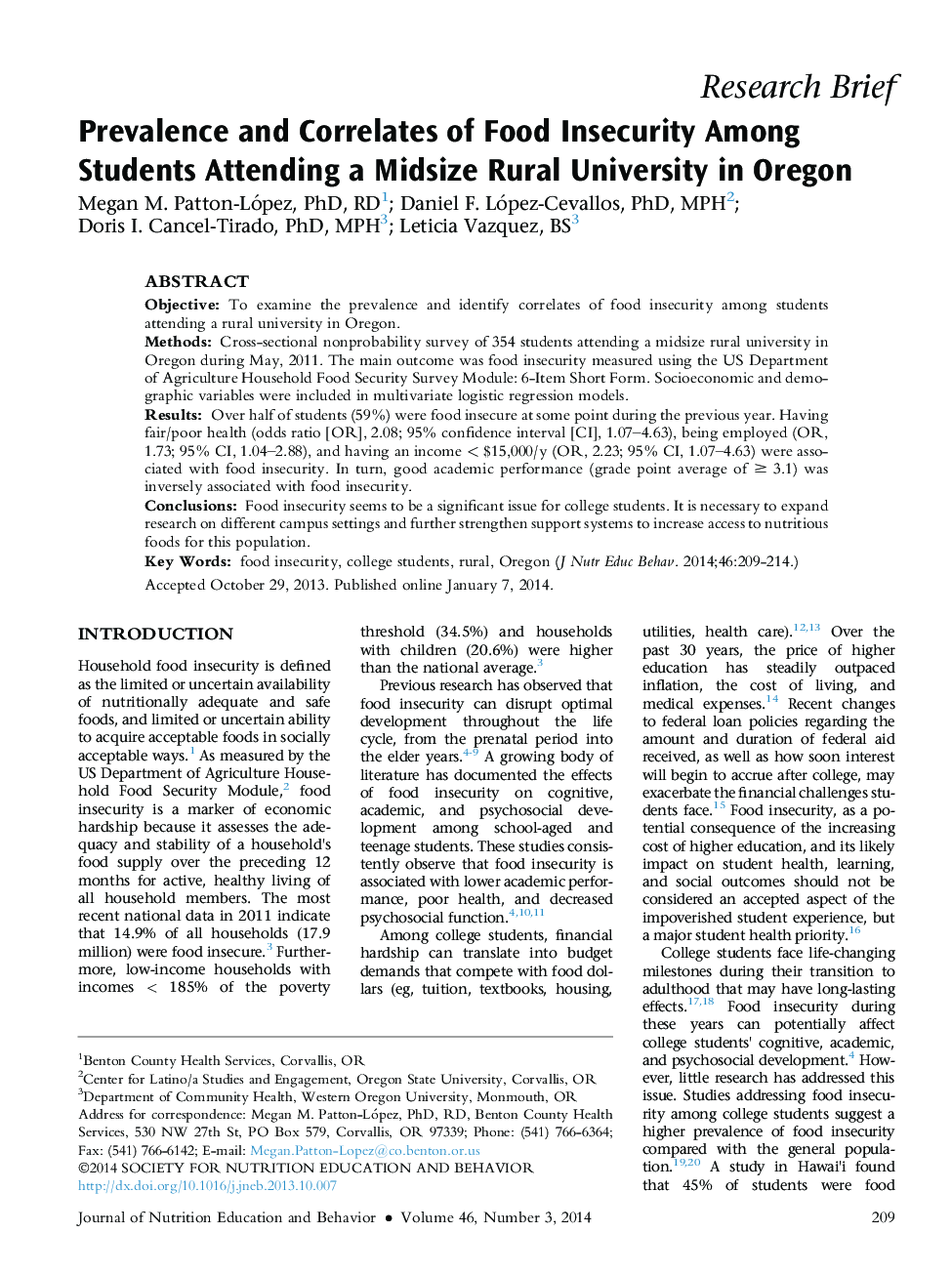| Article ID | Journal | Published Year | Pages | File Type |
|---|---|---|---|---|
| 361424 | Journal of Nutrition Education and Behavior | 2014 | 6 Pages |
ObjectiveTo examine the prevalence and identify correlates of food insecurity among students attending a rural university in Oregon.MethodsCross-sectional nonprobability survey of 354 students attending a midsize rural university in Oregon during May, 2011. The main outcome was food insecurity measured using the US Department of Agriculture Household Food Security Survey Module: 6-Item Short Form. Socioeconomic and demographic variables were included in multivariate logistic regression models.ResultsOver half of students (59%) were food insecure at some point during the previous year. Having fair/poor health (odds ratio [OR], 2.08; 95% confidence interval [CI], 1.07–4.63), being employed (OR, 1.73; 95% CI, 1.04–2.88), and having an income < $15,000/y (OR, 2.23; 95% CI, 1.07–4.63) were associated with food insecurity. In turn, good academic performance (grade point average of ≥ 3.1) was inversely associated with food insecurity.ConclusionsFood insecurity seems to be a significant issue for college students. It is necessary to expand research on different campus settings and further strengthen support systems to increase access to nutritious foods for this population.
